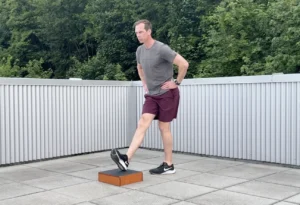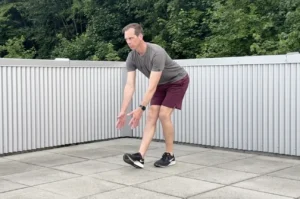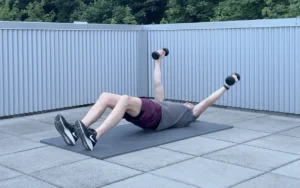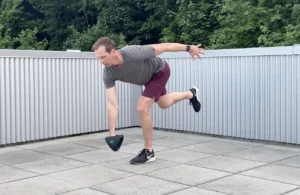If you run regularly, you’ve probably felt it: that tight, tugging sensation in the back of your thigh that makes you wonder if a pull is coming.
You’re not alone — up to 80% of runners experience a running-related injury each year, and hamstrings are one of the most common trouble spots.
The hamstrings — a powerful group of muscles that control your hip and knee — handle forces 2 to 9 times your body weight every time your foot hits the ground.
If you’ve ever had a hamstring strain before, your risk of it happening again doubles. But the good news? You can absolutely break that cycle.
(💪 Don’t Miss our Hammie-Focused DailyDrop👇)
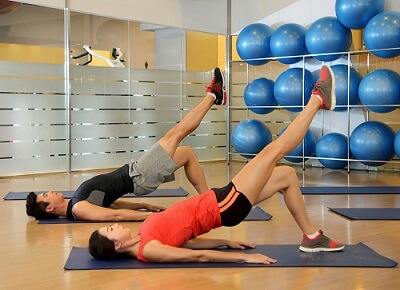
The Two Main Types of Hamstring Injuries
1. Sudden Pull (Acute Strain)
That sharp, sudden “oh no” moment usually happens during faster running — sprints, hills, or sudden accelerations.
The muscle fibers get overloaded while your leg is stretched out behind you.
2. Lingering Pain (Proximal Hamstring Tendinopathy)
This one builds up gradually, often as a deep ache near your “sit bone.”
It’s common in runners logging consistent miles or adding hills and speedwork without enough recovery.
Why It Happens (and What You Can Change)
There are a few sneaky culprits that make your hamstrings more vulnerable:
- Weakness: Especially when the muscle lengthens (eccentric control).
- Poor stability: A weak core or glutes force the hamstrings to overwork.
- Tightness: Limited flexibility or mobility can increase strain.
- Running form: Overstriding and low cadence magnify load.
Your takeaway? Build strength, stability, and smarter movement habits.
The Road to Recovery (and Prevention)
Early Phase: Calm It Down, Don’t Shut It Down
In the first few days:
- Reduce pain and swelling. Gentle walking, swimming, or cycling are okay.
- Avoid long rest — too much immobilization creates stiffness and scar tissue.
- Start light, pain-free movement (no deep stretches yet).

Later Phase: Build Back Stronger
Once pain is under control:
- Focus on eccentric strength — slow, controlled lengthening moves like:
- Nordic Hamstring Curls
- Single-Leg Romanian Deadlifts
- Glute Bridges & Deadlifts
- Add core and glute work to balance your system.
- Rebuild your endurance and control before you ramp mileage.
Getting Back to Running Smart
When you’re pain-free and strong again:
- Ease back gradually. Start slower and shorten your stride.
- Increase cadence by 5–10%. It reduces load on your hamstrings and knees.
- Listen to your body. Use “auto-regulation” — some days you push, some days you back off.
- Always include a short warm-up and cool-down to keep your tissues primed.
The Hammie-Focused DailyDrop
To help you build hamstring durability and confidence, we’ve created a custom DailyDrop designed specifically for runners. These moves strengthen the key stabilizers and reduce your risk of reinjury.
Try them today! 👇👇


